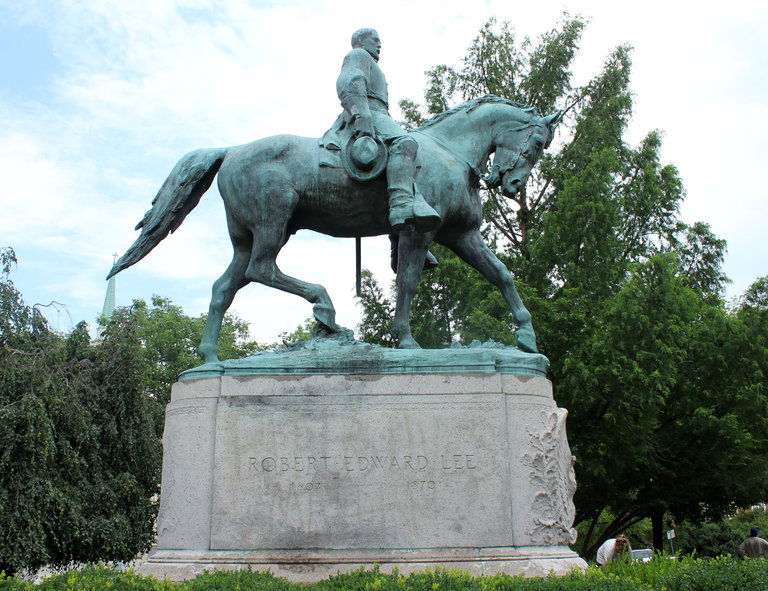Tensions violently climaxed at the “Unite the Right” rally in Charlottesville, Virginia this Saturday, following a series of marches protesting the contentious removal of Robert E. Lee’s statue, located in Emancipation Park (formerly Lee Park). White supremacist icon Richard Spencer led marches on May 15, and another on July 10. Each march mobilized larger counter-protest movements, increased the need for police presence, and induced more violence.
Jason Kessler, a Charlottesville resident, organized the “Unite the Right” rally due to anger at what he feels, “is a very far left community that has absorbed these cultural Marxist principles advocated in college towns across the country, about blaming white people for everything.”
Over 200 residents assembled at City Hall in a failed attempt to revoke Jason Kessler’s permit to rally on August 12th. However, NBC29 reported that the Charlottesville government “says its hands are tied and did try to find a legal way to stop the rally.”
The statue’s removal has been postponed after a judge on the Charlottesville Circuit Court deferred its removal by six months, giving white nationalists time to advocate for its preservation. The protests surprised many residents of Charlottesville, as over 80% of the constituents voted for Hillary Clinton in the 2016 elections.
The rally featured few major incidents between white nationalists and anti-nationalist protesters, until a 20-year-old man suddenly drove into a crowd of protestors, killing a thirty-two-year-old woman and injuring nineteen others.
In the aftermath of the violence, President Donald J. Trump drew national criticism from across the political spectrum for not directly denouncing white supremacist organizations; instead choosing to condemn “this egregious display of hatred, bigotry, and violence on many sides — on many sides”.
Establishment conservative Governor Terry McAuliffe (VA) told crowds that “the white supremacists and the Nazis who came into Charlottesville today” must “go home.” Senator Marco Rubio tweeted:
The Chief Executive of Merck resigned from his position on the president’s American Manufacturing Council on Monday, over objections “to the president’s statement on Saturday blaming violence that left one woman dead on ‘many sides’.”
One day following the tragic attack in Charlottesville, the White House released a statement further obfuscating President Donald Trump’s remarks by generically including “white supremacists, KKK, neo-Nazi and all extremist groups.”
Criticism from the public is expected, as research by PEW in 2016 revealed that 75% of Democrats felt that “Trump has done too little to distance himself from white nationalist groups,” as compared with 57% of Republicans who believe that he’s “done about the right amount to distance himself.” Interestingly, non-college respondents and the general population above 65 displayed almost identical scores, when non-white populations are excluded.
A study for PPRI, Cox, Lienesch & Jones found that party identification, fears of cultural displacement, support for deportation policies, and economic fatalism of the respondents were the most positively correlated factors in favoring Mr. Trump. While economic hardships made one voters more likely to support Hillary Clinton. These data indicate that Trump’s reluctance to address white supremacy will be viewed positively by his fan base, although not necessarily by the entire Republican party.
These observations reflect Jason Kessler’s motivation for starting the rally; President Trump’s constituents are defined by a unique cultural resentment and a lack of regard for higher education. Contrary to popular narratives, economic hardship, physical deprivation of material assets, and the trials of the American working class are not the primary driving forces behind Mr. Trump’s supporters. This political movement is one fueled by the historical consciousness of white political, legal, and cultural hegemony.
The president on Monday gave an impromptu speech, reiterating his communication team’s message that, “racism is evil and those that cause violence in its name are criminals and thugs – including the KKK, Neo-Nazis, white supremacists, and other groups that are repugnant to everything we hold dear as Americans,” adding that, “no matter the color of our skin, we all live under the same laws.”
Mr. Trump’s vacuous remarks are unlikely to quell any anger from left-of-center Americans given his initial reluctance and their inorganic delivery. Centrists on both sides could be satisfied by the president’s remarks. However, it is unclear whether Mr. Trump’s comments served to alienate him from his core constituents on the far right.
President Trump will have to address the repercussions of his own conduct this week during his first visit to New York City since his inauguration. With local tensions no closer to resolution, crowds of protestors assembling outside of Trump Towers, and three formal resignations from his American Manufacturing Council, the only clear outcome is that a viable solution is growingly unattainable.


